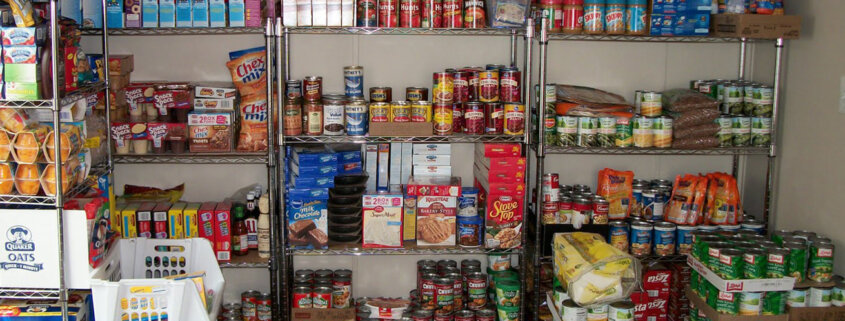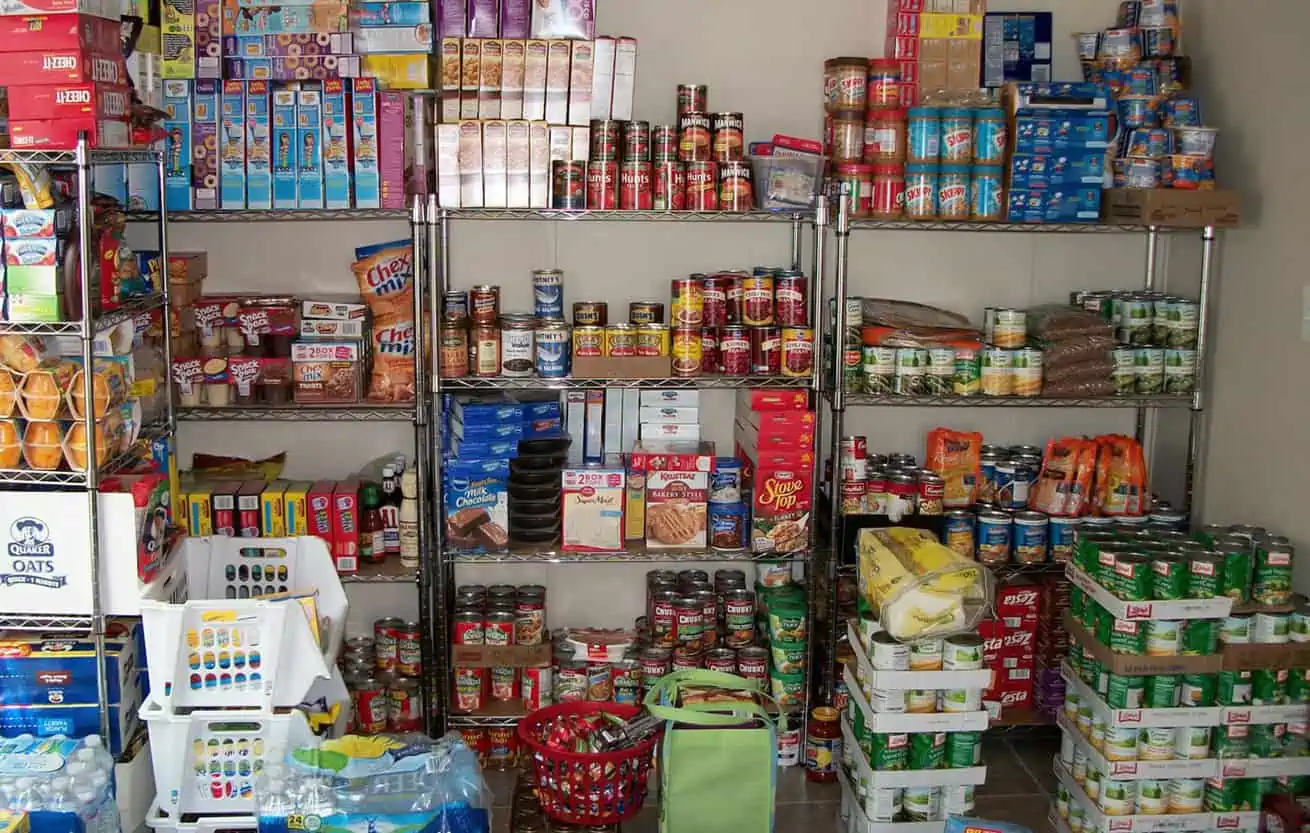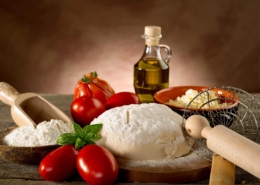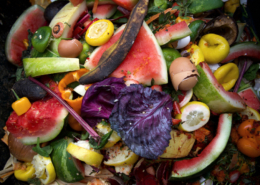31 Non-Perishable Foods to Stockpile Now and Where to Store Them—UPDATED!
If recent world events and warnings for what may be ahead have given you one big wake-up call, you are not alone. The message is clear: Every household needs some amount of food in reserve. Natural disasters like blizzards, earthquakes, hurricanes, floods and broken supply chains can come with little or no warning.
Stocking up on the right non-perishable foods with long shelf lives will help you weather any storm (or global pandemic) with less stress. The type and amount of food to store is an individual decision that depends on your financial resources, foods your family will eat, and the storage area available.
Prepared or hoarding?
Stockpiling resources now for use during hard times is not hoarding. It’s called preparedness. Stockpiling is a preparedness-minded person’s insurance investment against a future calamity that may or may not happen.
In my opinion, those who accuse others of hoarding are people who have not prepared. Then when the problem happens that they are not ready for and others are, they blame those who are prepared for hoarding.
Start small
Ideally, your long-term goal is to have stockpiled enough to feed your family for six months. But start with shorter goals, like enough food for one week, then two weeks, and then a month.
This kind of incremental plan won’t bust the budget or throw you into panic buying that can easily lead to burnout and buyer’s remorse.
What Does it Mean?
Non-perishable foods are shelf-stable and do not decay or spoil easily. These food items can withstand months of shelf life. Storage time increases dramatically when non-perishables are stored in a cool, dark place.
Long shelf life
Following is a list of foods that won’t spoil quickly, making them good choices to stockpile, so you are prepared for future unknowns.
What do labels mean?
According to the USDA, the terms “sell by,” “use by” and “best by” mean different things:
Sell by: Retailers need to sell or remove the product by this date.
Use by: Consumers should probably eat the item by this date. If the date has passed, the product is often still safe, but the quality may be reduced.
Best by: The product’s quality is guaranteed until this date.
Routine management
Make a list of the foods in your storeroom and go through them once every 6 to 12 months to ensure they’re still good. And don’t forget to have a can opener on hand at all times—all that food won’t be useful if you can’t open it.
1. Beef jerky
Shelf life: 1 to 2 years
Dried pieces of meat known as “jerky” are a delicious snack item in a non-perishable food stockpile. It’s lean, dry, and salted—a combination of qualities that contribute to its longevity if it’s kept in an unopened package.
2. Canned vegetables
Shelf life: 1 to 2 years past “best by” date
Generally, commercially canned foods are good for two to five years from the date they were packed. High acid food like tomato sauce will not keep as long as a can of beans, for example. Canned varieties can provide you with essential nutrients, making these a great hurricane food or natural disaster option.
If not subjected to extreme heat, canned fruits and vegetables stay good for at least one year and possibly two years past the “best by” date on the can. Cans with swollen tops or sides should be discarded, as this may indicate the presence of bacteria.
3. Canned protein
Shelf life: 3 to 5 years after the “best by” date
Canned proteins like tuna, salmon, chicken, corned beef, turkey, and Spam, have a very long shelf life. Provided they are stored in a dry, cool place and are not damaged, you can count on shelf life of three to five years after the “best by” date.
Canned meats provide essential protein. According to the USDA Meat and poultry hotline, vacuum-packed pouches have a shorter shelf life but will last at least six months. Vacuum-sealed packs may come in handy if you don’t have a can opener.
Pro Tip
When non-perishable items are on sale, buy for your immediate need plus one or two for your stockpile. Make this a regular habit and you’ll build a very impressive stockpile in no time.
4. Canned soups and chili
Shelf life: 1 to 2 years past “best by” date
An added benefit here is that soups and chili can be eaten straight out of the can while providing a variety of nutrients. Consider storing a variety of these items and look for low-sodium options.
5. White rice
Shelf life: Indefinite
Nutritionists typically are not fans of white rice, pointing out that brown rice is far superior in terms of vitamins, minerals, antioxidants, and dietary fiber. But brown rice also has a higher oil content than white rice, so it has a much shorter shelf life of just a few months.
White rice is almost indestructible with an indefinite shelf life! Its only enemies are moisture and tiny insects known as rice weevils or flour bugs that find their way into the package, or hatched from eggs that were harvested along with the rice itself.
Storing rice in airtight containers takes care of both problems. However, if you find bugs anyway, discard the rice.
6. Dried pasta
Shelf life: 1 to 2 years past “best by” date
Fresh pasta is made with eggs and needs to be refrigerated as it is perishable. However, dried pasta made with just semolina wheat flour and water has a super long shelf life as long as the pacakge remains unopened and no moisture seeps into the package.
7. Dry beans
Shelf life: Indefinite
Dry beans and legumes are a great source of protein and ideal for long-term storage. In their dry state, they remain edible and packed with nutrition indefinitely—many years!—provided they are kept away from moisture.
Pro Tip
As dry beans and legumes age in storage, they become even drier. This means that you will need to soak and cook them longer to reach the edible tenderness you may have enjoyed with shorter prep times. That does not mean they are spoiled, no longer nutritious, or that they should be thrown out. No! This great source of protein will be just as good as much younger beans, with a longer soak and cook time.
Resources
The Protein in Rice and Beans. Rice and beans may seem like a simplistic meal without enough protein or nutrition. It turns out, however, that rice and bean dishes have complete proteins, are packed with carbohydrates, protein, and nutrients you may need for a vegan diet or fitness plan, and are totally delicious.
The Bean Cookbook is a free download from The Bean Institute that will teach you everything you need to know about preparing and enjoying beans. Honestly, I had no idea. I’ve learned so much. Plus, hundreds of really awesome recipes! FREE download.
9. Nuts and trail mixes
Stock up on these high-energy foods—they’re healthful and convenient for snacking during a hurricane, tornado, or another emergency. Look for vacuum-packed containers which prevent the nuts and trail mixes and losing freshness.
10. Granola bars and power bars
Shelf life: Up to 6 months
Healthy and filling, these portable snacks usually stay fresh for at least six months. Plus, they’re an excellent source of carbohydrates. You can get more energy from carbohydrates without tons of food.
11. Freeze-dried fruits
Shelf life: Up to 25 years
Freeze-dried fruit is shelf-stable fruit that has undergone a process to remove nearly all of its moisture while retaining flavor and nutrients. It’s very light, with a dry, crispy texture and intense, concentrated fruit flavor. According to some manufacturers, freeze-dried fruit has a shelf-life of 25 to 30 years, unopened, if stored under ideal conditions
12. Apples
Shelf life: Up to 6 months
Apples are a fruit that can stay fresh and crisp for as long as six months if they’re stored in a cold, dark place like a root cellar or cool basement. If they’re kept in a fruit bowl at room temperature, they’ll generally remain at their best for at least two weeks, sometimes as long as a month.
13. Flour
Shelf life: 3 to 6 months sealed; 1 year in the fridge; up to 5 years in a freezer
Many factors influence flour’s shelf life, or the length of time it lasts before beginning to spoil. Most flours stay fresh 3–8 months at room temperature, usually long past their expiration date. However, the specific shelf life depends on the type of flour, its ingredients, and how you store it
You can count on all-purpose flour lasting well for three to six months in its sealed bag, up to one year in the refrigerator and, longer if stored in a freezer.
14. Sugar
Shelf life: Indefinite
Sugar is one of the few products that lasts indefinitely. The only problem it presents for cooks is that it can harden. For this reason, plan on sugar having a useful shelf life of about two years.
15. Bottled water
Shelf life: Indefinite
Here’s the goal: Stock at least a three-day supply—you need at least one gallon per person per day. A normally active person should drink at least a half gallon of water each day. The other half gallon is for adding to food and washing. Start small; buy a few bottles every time you’re at the store. Or use your own sterilized containers that you fill from the tap, keep tightly covered.
16. Sports drinks
Shelf life: As printed on the container
The electrolytes and carbohydrates in beverages like Gatorade or Powerade will help you rehydrate and replenish fluid when water is scarce. These drinks have expiration dates printed on them, so pay attention and rotate your stock accordingly.
17. Powdered milk
Shelf life: 1 to 1.5 years
Almost all dairy products require refrigeration, so powdered milk and also canned evaporated milk are great stockpile items. These substitutes are an excellent source of calcium and vitamin D when fresh milk is not an option. However, the flavor and texture may change after 18 months or so.
18. Seasonings
Shelf life: Indefinite for most
If you have access to a propane or charcoal stove, you may be doing some cooking. A basic supply of salt, pepper, seasonings, and sweeteners will improve the flavor of your food, and items often are forgotten when amassing a stockpile.
Salt will never go bad, pepper should be used within 5 years, after which time it may lose its potency.
Other spices vary but generally have a shelf life of years while unopened.
Bouillon cubes have a shelf life of 2 years, which makes this a wonderful option for a stockpile as bouillon is a source of great flavor.
19. Freeze-dried coffee
Shelf life: Up to 25 years
Freeze-dried coffee is real coffee that has had all of the moisture removed, resulting in coffee “crystals.” Since all the moisture is removed, it is no longer subject to bacterial contamination. Provided you keep freeze-dried coffee sealed, it will retain all of its flavor and caffeination for many years—up to 25!
20. Ghee
Shelf life: 2 years up to indefinite in freezer
Ghee is “clarified butter,” meaning all milk solids have been removed. Because ghee contains no lactose, it has an amazingly long shelf life. A jar of ghee remains suitable for many months if stored unrefrigerated in a cool dark place. Kept in the freezer, ghee has an indefinite shelf life.
Ghee is a suitable replacement for regular butter, from spreading on toast to popping corn and everything between.
21. Dark chocolate
Shelf life: 2 to 5 years
Chocolate is an excellent option for stockpiling. With high cacao content and little or no milk, dark chocolate will last much longer than milk chocolate, which contains dairy products subject to earlier spoilage.
High temperatures are bad for all chocolate, but the dark variety should last for a couple of years at temperatures up to about 75 F, and will keep for as long as five years if stored between 60 and 65 F.
22. Honey
Shelf life: Indefinite
Containers of honey you buy in the supermarket generally have a “best by” date. Manufacturers do this because, over time honey can change in color and or form sugar crystals, both of which are perfectly harmless. Truth be told, honey has an indefinite shelf life—even up to decades or generations. An excellent option for your stockpile.
23. Peanut butter
Shelf life: 2 years
A great source of energy, peanut butter is chock-full of healthful fats and protein. Unless the jar indicates otherwise, you don’t have to refrigerate it after opening. An unopened jar of peanut butter kept at room temperature lasts longer than two years. However, after this time, the oil will likely separate from the solids, drying out the peanut butter. And the flavor may fade, but it is not spoiled or remains safe to eat.
Stored in a dark place at room temperature, it will remain flavorful and safe to eat for at least three months once opened, according to the National Peanut Board.
24. Multivitamins
Shelf life: As printed on the container
Supplements will help replace the nutrients you would have consumed on a normal diet. Pay attention to expiration dates, after which vitamins and other nutritional supplements will begin to lose their potency.
25. Salt
Shelf life: Indefinitely
Salt is an essential item. Humans cannot live with sodium. You can use salt to season cooked meals and make rations taste better.
26. Sugar
Shelf life: Indefinitely
27. Baking Soda
Shelf life: Indefinitely
Cheap and easy to store, you will need this leavening agent for making quick breads and other recipes. Baking soda is a durable item. Check for its “best by” or “best before” date to see how long it should retain its potency. If your baking soda doesn’t come with a “best by” date, the average shelf life of baking soda is 2 to 3 years for unopened packs.
28. Dry yeast
Shelf life: Indefinitely
When baking yeast is on hand, you can make dozens of foods. You can make breads, add extra protein to your diet, or even as skin and hair treatments. Opened packages of dry yeast (active dry or instant) can be stored in the refrigerator for three to four months. If your yeast is older than this, it may still be good. Proof your yeast to find out if it’s still active by adding 1 teaspoon of sugar and 2 1/4 teaspoons of yeast (one envelope) to 1/4 cup of warm water. Then, wait 10 minutes.
29. Oils
Shelf life: 6 to 36 months
Oils with healthy fats, like olive oil, coconut oil, and avocado oil, are an ideal base for sauces and dressings and store well with a shelf life of 6 months to 1 years. The shelf life of regular vegetable oil all depends on how you store it. Generally speaking, an opened bottle will be good for one to three years.
30. Oats
Shelf life: 12 to 24 months
Oats can last a long time on the shelf. Use them to make quick and hot cereals that are nutrient-dense and packed with protein. You can make oatmeal a dozen different ways, ranging from sweet to savory.
31. Textured vegetable protein (TVP)
Shelf life: 12 months to 20 years
Although textured vegetable protein is a standby for vegetarians and vegans, it is an excellent form of protein to have around for emergencies. TVP is lightweight and has little to no flavor, so it can be added to almost anything. Like tofu, it takes on the flavors of whatever it is cooked with. The shelf life of TVP is 10 to 20 years when stored in an airtight container at a cool place (below 70° F. The shelf life is more like one year after opening or not being stored in an airtight container
Storage areas
When we think of storage areas, it’s usually a basement or garage—both of which are ideal. But what if you live in an apartment or have no basement and your garage is barely big enough for your vehicle(s)? Get creative! You’ll be amazed how many places in your home can keep emergency food supplies out of sight while still handy.
Under beds
If you have room under your beds, you can use shallow plastic containers to hold canned goods and sealed dry goods.
Closets
Walk into your closet, turn around and look above the door. This space is open in many closets and a great place to add a wire shelf for lighter foodstuffs. Be very careful as you don’t want cans to roll off and land on your head.
Under stairs
That space under the stairs leading to your basement or second story may seem useless for its odd shape and lack of accessibility. But take a second look. This space might just be ideal for food storage with some simple shelves.
- MORE: How to Store Non-Perishable Food
Refrigerator and freezer
What should you do about the food in your refrigerator and freezer if the electricity goes out? Do not open the refrigerator, not even to take a peek, until you absolutely need to get something.
Refrigerator
If food has spent more than four hours over 40° F., it’s likely no longer safe to eat. But remember that a refrigerator is well-insulated. If you do not open it, the temperature will remain at a safe level for an additional hour or two, even longer.
Freezer
As long as frozen foods have ice crystals or are cool to the touch, they’re still safe. Here’s the rule: Once the food reaches room temperature of about 65 F., bacteria forms more quickly, and you want to be very careful about what you’re eating. As with the refrigerator, keep the freezer door tightly closed to slow the thawing process.
Heat alternative
If you don’t have electricity, you may still be able to cook or heat your food. If you have outdoor access, a charcoal grill or propane stove is a viable option. Caution: These cannot be used indoors because of improper ventilation. If you’re stuck indoors, you’ll be glad to have kept a can of Sterno handy, essentially “canned heat,” that requires no electricity and can warm up small amounts of food in cookware.
Expanded & Revised: 8-24-22
















I kept an earthquake closet with supplies to last at least a week. Outdoor stores sell dried meals and fruits for camping which I stocked instead of canned. I also stocked canned Boston brown bread. We ate one meal a month from the closet and replaced it regularly.
We kept a backpack in each car with a change of clothes, tennis shoes, first aid supplies to enable us to hike home in case of road collapse
After going through several rounds of pantry bugs, I now freeze all rice, grain products and beans for at least 24 hours as soon as I bring things home. I’ve even frozen crispy cereal with no change in texture. No more bugs!
Many years ago I started storing my specialty flours, dry milk, bread/graham crumbs, etc. in the freezer. I also put grain and rice products in the freezer for a day to kill any flour bugs that may be in there. If there’s room I leave them in the freezer. All of these items are stored in zipper bags.
AP flour and anything else stored at room temperature are in tightly closed containers.
I’d like to add that yeast, in a tightly sealed container will last indefinitely in the freezer.
One reminder regarding peanut butter – if it is “all natural” ie. no salt, sugar or oil added it does require refrigeration after opening.
Don’t forget “milk on the shelf ” I first found it in Switzerland years ago. Now it’s finally found it’s way to America. It professes 6 months.shelf life unopened and 2 months in the fridge after opening. Taste is remarkably similar to fresh. Brand at WalMart is Parmalat but I’ve found it at Dollar stores also.
When I purchase flour, I always place it in the freezer for 24 hours before using, to kill any unwanted “visitors”. I read that a prolonged freeze kills the bugs that are present in the product when purchased, and I no longer have that problem. I will now do the same for rice. I always wondered if similar bugs affected rice!
We were in Hurricane Andrew years ago so I already knew the value of toilet paper! When the virus started we already had a 5 year supply that we rotate. My point here is rotate. After 5 or 6 years it starts to break down so you do have to rotate it. Toilet paper is made to break down when you flush it so it starts to shred when you use it after a long time….and yes, I did share with family and friend and asked that they replace it when they can.
Unfortunately this post comes at a time when many stores are just recovering from the panic buying that took place since February when the Corona Virus hit out country. Canned goods, beans etc are still in short supply in all stores in my area.
This is a great idea..to add to my emergency pantry a few items at a time! I’m implementing it THIS week! So simple, so easy! Also, I’m now looking at alternate spaces for storage, such as under the stairs or over doors. Thank you so much!!
I fell into the habit years ago of labeling all my canned, bottled and packaged food with a permanent marker before I even put it away. I write the expiration date on the top of the package in large numbers to make it easy to see what foods need to be eaten next in the rotation. If I’m storing it in a container where I only see the tops, I also note what the food is. I would add nut butters and jam to your list. The ever popular peanut butter doesn’t need refrigeration after opening; it’s a protein source that doesn’t need cooking either. I think we’ve all learned in the past few months that a stockpile of toilet paper is a must also, along with some paper towels. Disposable plates, bowls and flatware are helpful, too. And that ever necessary can opener. Imagine if we all had a stockpile that could get us by for a few months. It would have cut down drastically on risky social contact during the pandemic.
One problem I have is the rotation thing. I store canned goods for emergencies, but I seldom eat canned goods. I much prefer fresh and frozen. One method I’ve found is keeping the food for 12-18 months, then donating it and buying new cans. Your info was good and now I need to go clean out my pantry.
Food banks are struggling this year so I am sure they will be happy to see you.
Food banks and church pantries will not accept expired foods in our area. So plan to donate at least a couple months before the best by/exp date on the items, or they may just be tossed.
We are still eating hurricane supplies from 2015. We’ve found canned tomato or fruit products will need to be rotated within a few months of exp/best by date or they will take on a metallic taste due to the acids in the food.
Tip for older dried beans/legumes: add a pinch or two of baking soda to the soak water to help them rehydrate, if really old also add a pinch or two to the cooking water. If you add too much soda, they will get really mushy but still be edible.